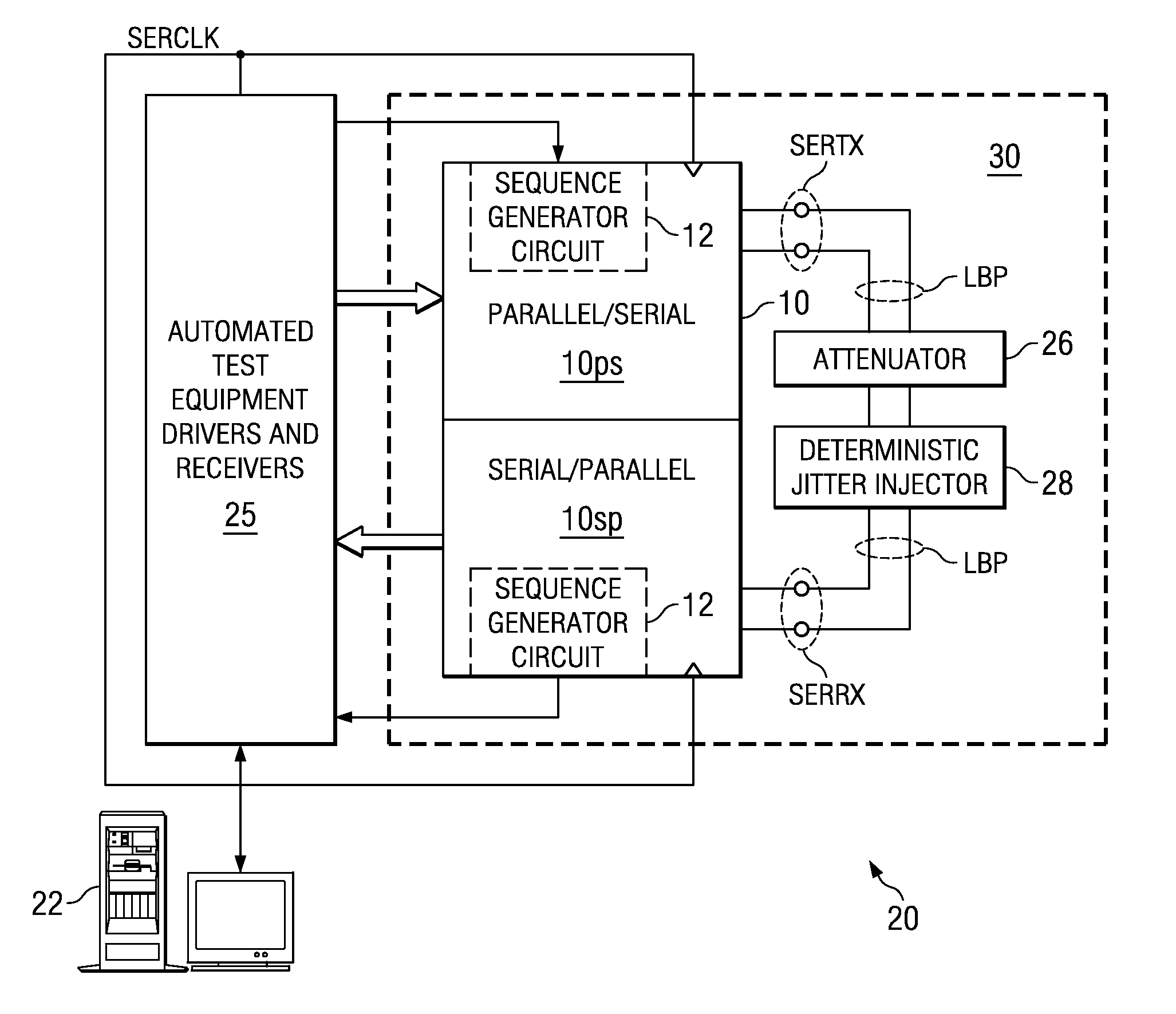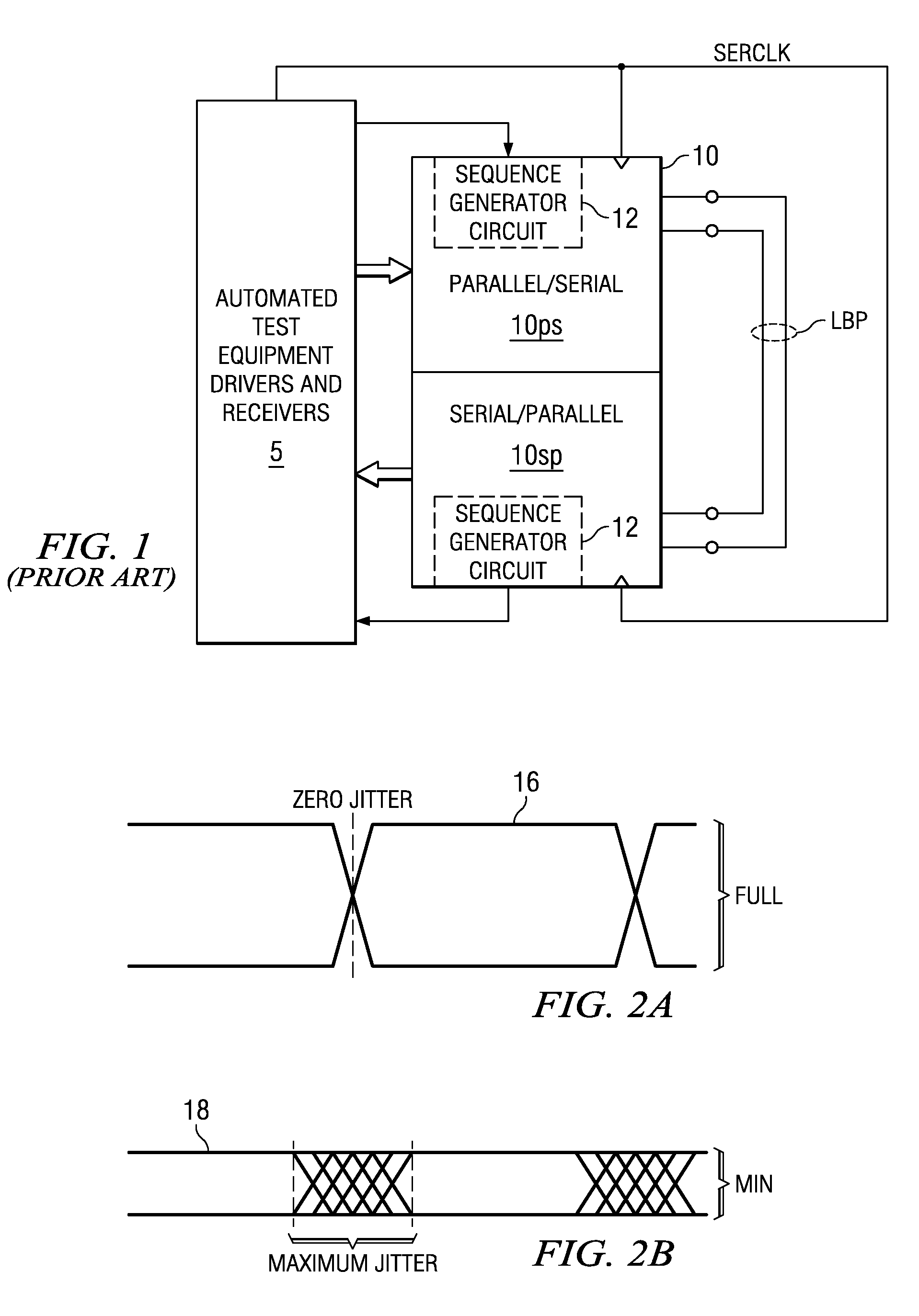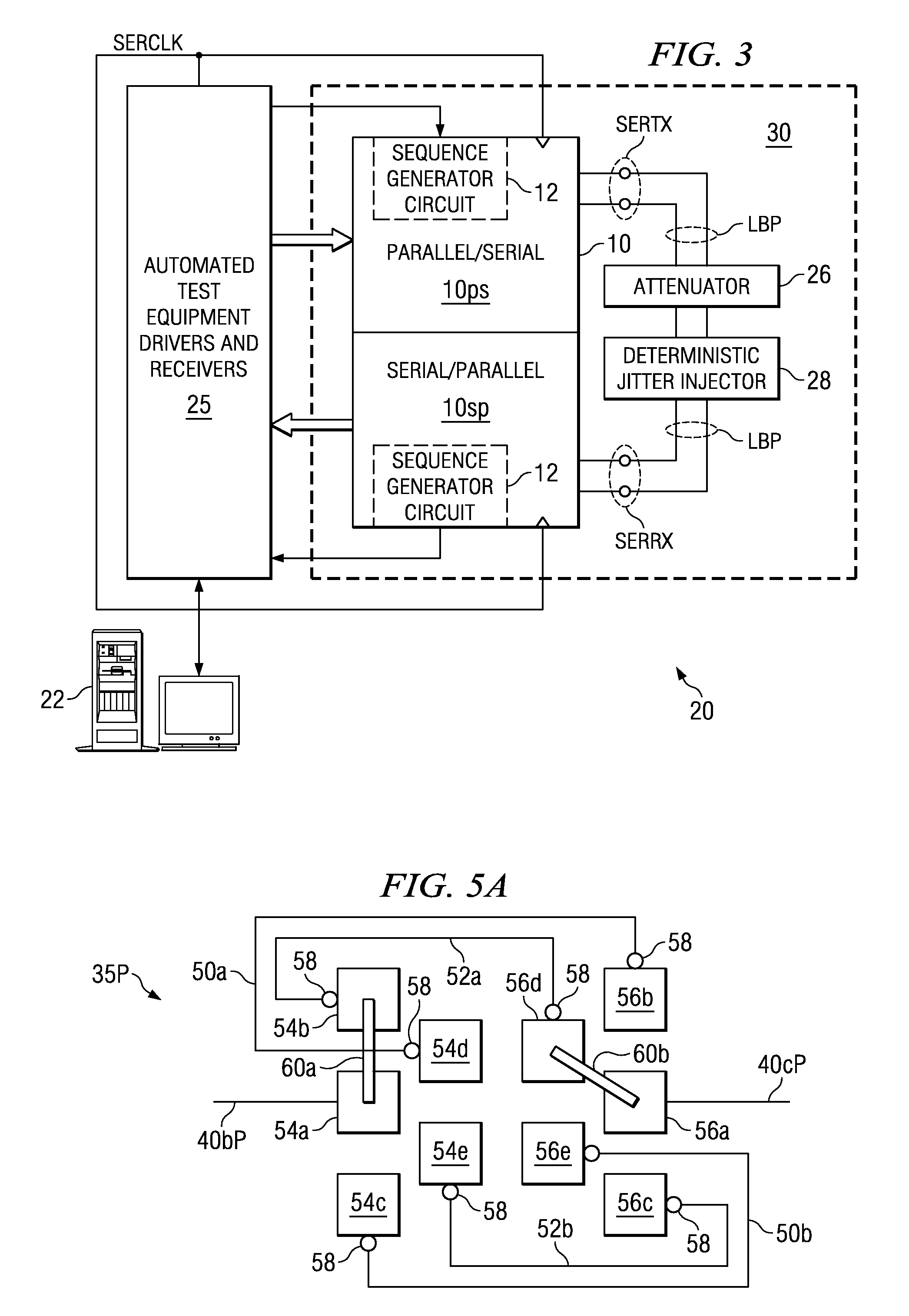Automated test of receiver sensitivity and receiver jitter tolerance of an integrated circuit
a technology of integrated circuits and automatic testing, applied in the direction of noise figure or signal-to-noise ratio measurement, instruments, transmission monitoring, etc., can solve the problems of significant lower performance of automated testing equipment, historical difficulty in testing integrated circuits intended to communicate signals at extremely high frequencies, and different noise environmen
- Summary
- Abstract
- Description
- Claims
- Application Information
AI Technical Summary
Benefits of technology
Problems solved by technology
Method used
Image
Examples
Embodiment Construction
[0033]The present invention will be described in connection with its preferred embodiment, namely as implemented into automated test equipment for high-speed communications integrated circuits, such as a serializer / deserializer transceiver device, considering that this invention is especially beneficial when implemented into such an environment. However, it is contemplated that this invention may also provide benefits when used in the automated testing of other types of integrated circuit devices, and also in the automated testing of other electronic components. Accordingly, it is to be understood that the following description is provided by way of example only, and is not intended to limit the true scope of this invention as claimed.
[0034]Referring now to FIG. 3, the electrical construction of an automated test apparatus 20, for testing SerDes device 10 according to the preferred embodiment of the invention, will now be described. Automated test apparatus 20 includes ATE drivers a...
PUM
 Login to View More
Login to View More Abstract
Description
Claims
Application Information
 Login to View More
Login to View More - R&D
- Intellectual Property
- Life Sciences
- Materials
- Tech Scout
- Unparalleled Data Quality
- Higher Quality Content
- 60% Fewer Hallucinations
Browse by: Latest US Patents, China's latest patents, Technical Efficacy Thesaurus, Application Domain, Technology Topic, Popular Technical Reports.
© 2025 PatSnap. All rights reserved.Legal|Privacy policy|Modern Slavery Act Transparency Statement|Sitemap|About US| Contact US: help@patsnap.com



